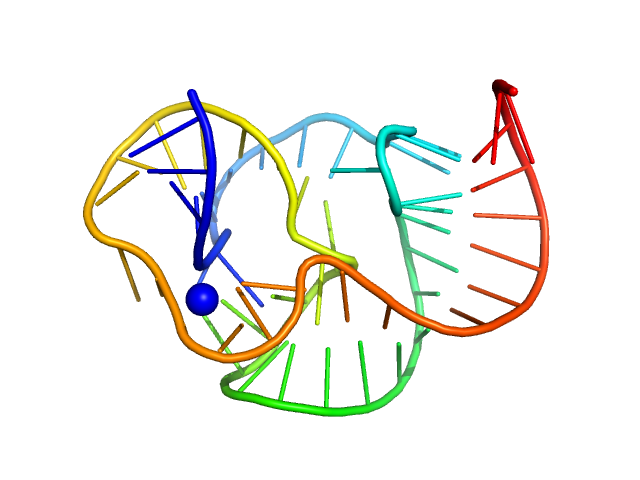|
Synchrotron SAXS data from solutions of ST9 RNA, WT (59 nucleotides) in 50 mM Tris pH 7.5, 100 mM NaCl, 1 mM DTT, 0.0002% w/v NaN3 were collected on the 16-ID (LiX) beam line at the National Synchrotron Light Source II (NSLS-II; Upton, NY, USA) using a Pilatus3 S 1M detector at a sample-detector distance of 3.6 m and at a wavelength of λ = 0.082 nm (I(s) vs s, where s = 4πsinθ/λ, and 2θ is the scattering angle). In-line size-exclusion chromatography (SEC) SAS was employed. The SEC parameters were as follows: A 95.00 μl sample at 3 mg/ml was injected at a 0.75 ml/min flow rate onto a GE Superdex 200 Increase 10/300 column at 20°C. 1200 successive 2 second frames were collected. The data were normalized to the intensity of the transmitted beam and radially averaged; the scattering of the solvent-blank was subtracted.
|
|
 s, nm-1
s, nm-1
